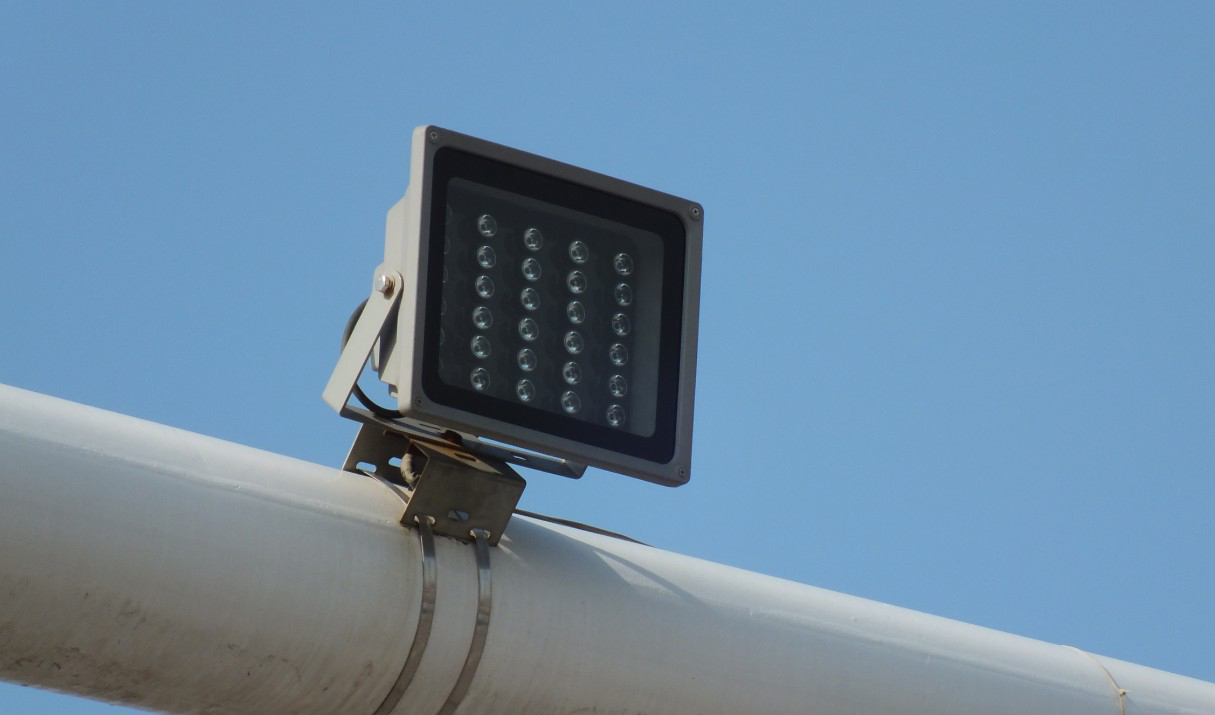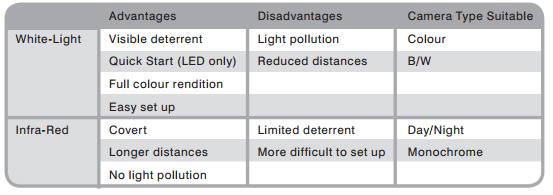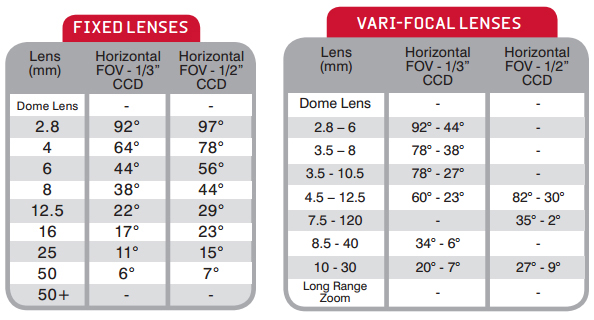
Security camera lighting - infrared or white light
Most crime happens during the cover of darkness. The challenge to the video surveillance system is to ensure that video footage is effective on a 24/7 basis, 365 days a year. Undoubtedly, lighting is fundamental to achieving this. Infrared light is the widely used artificial lighting for security cameras. However, in some cases, white light is required which can provide better illumination for specific applications.
1) Infrared or white light
Identifying the purpose of the system identifies the type of light to use. Infra-Red light provides greater distance, a varying degree of invisibility (depending on the exact wavelength) and no light pollution. Infra-Red is light designed only to be used by CCTV cameras. White-Light provides the opportunity to illuminate an area for pedestrians, staff or vehicles in addition to the CCTV system. It can also be used as a visual deterrent when turned on if an intruder is detected by a PIR.

2) Angle?
The illumination should ideally match the angle the camera / lens is set-to in order to provide best performance. If not, and too narrow an illumination angle is chosen, the camera will simply see a bright spot in the middle of the scene and the contrast between light and dark areas on scene will be too great to provide high quality images. Illumination which is too wide wastes energy and reduces achievable distance.
The table below shows the FOV angle for different fixed lenses as a reference.

3) Distance?
After selecting the angle, the next consideration is distance. How far should the lighting illuminate? Installers and specifiers should be aware that as angle increases, distance decreases.
4) Camera and Lens Considerations
Exact performance of any illuminator in a CCTV system is dependent upon the camera and lens combination used. For best results a high sensitivity camera (for IR projects an IR sensitive camera) should be used with a high transmission lens. Generally a CCTV imaging system (camera, lens, illumination) is only as good as its weakest link.
4) Color or monochrome images
Are color or monochrome images preferred at night? In many instances the end user would prefer color images but care must be given to provide true color with a color corrected illuminator. For example, many installers will be familiar with the yellow light provided by low pressure sodium street lighting. Using incorrect White-Light can actually damage the performance of a CCTV system leading to inaccurate color rendition – a camera is only as good the available illumination. Infra-Red should be used where White-Light would be too intrusive, where covert lighting is needed, or where longer illumination distances are required. Of course, many cameras now switch between color during the day and mono for night time operation to give the best of both worlds.
Get My Latest Posts
Subscribe to get the latest updates.
Your email address will never be shared with any 3rd party.